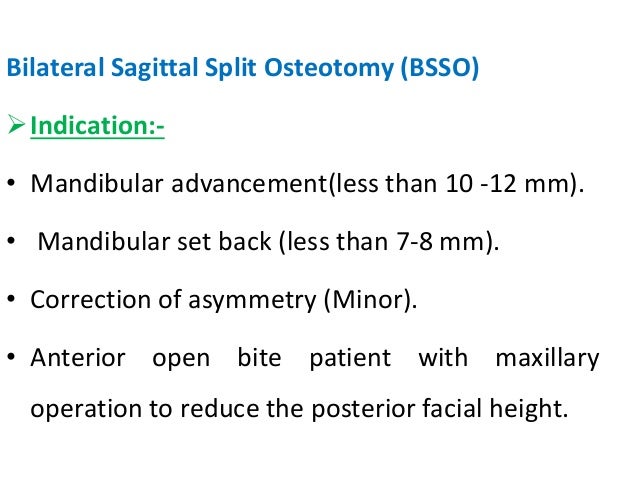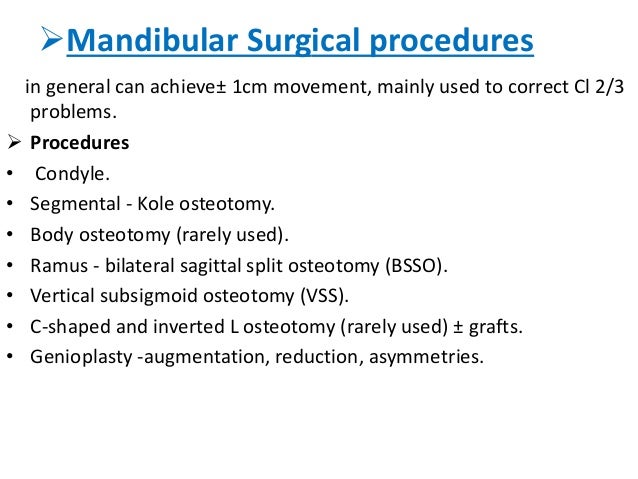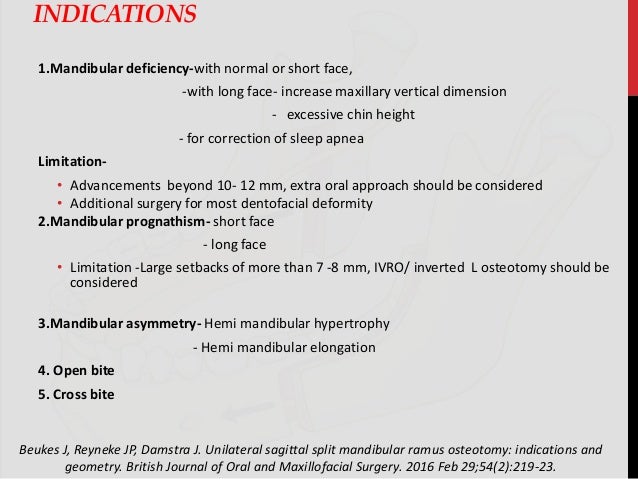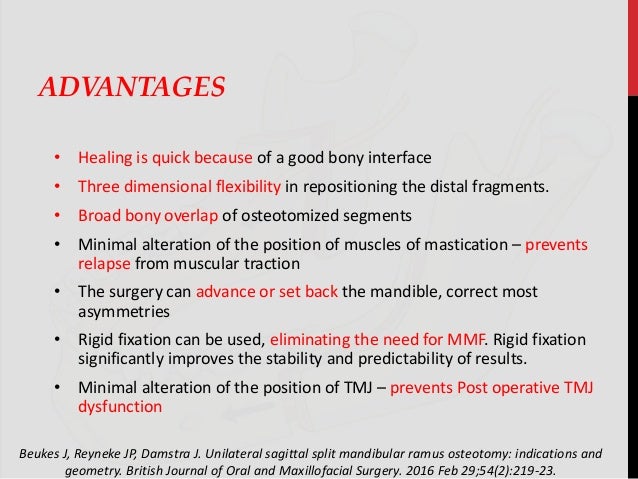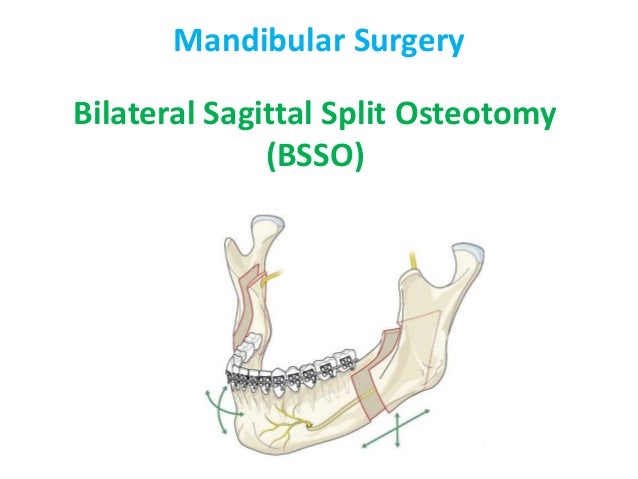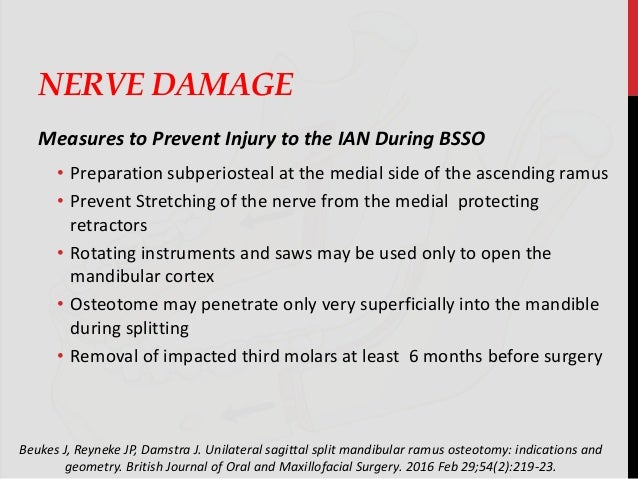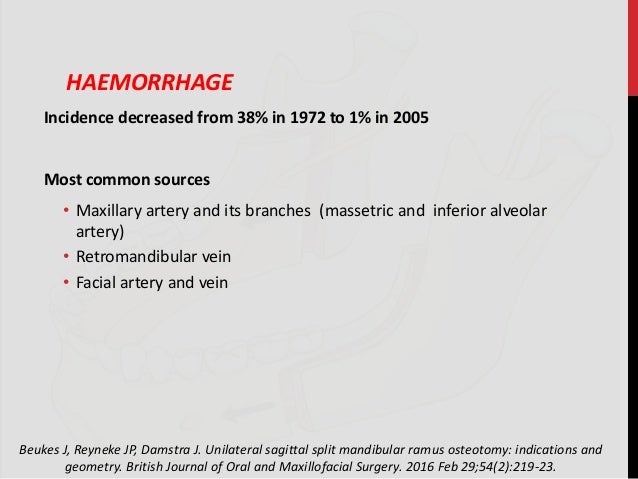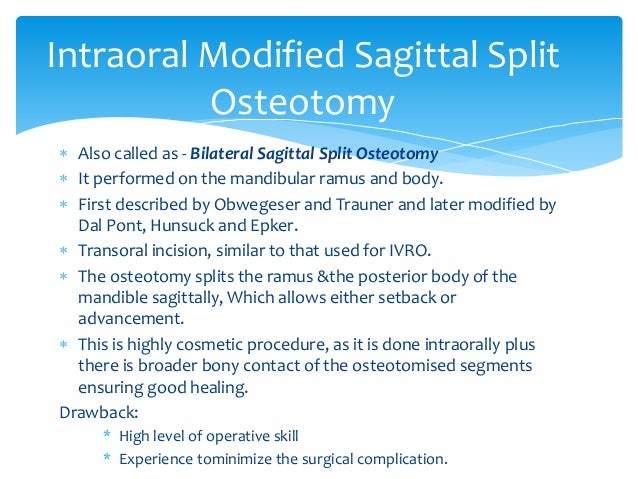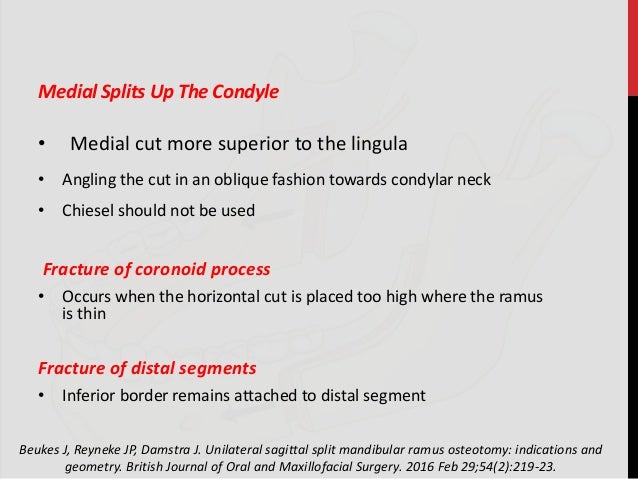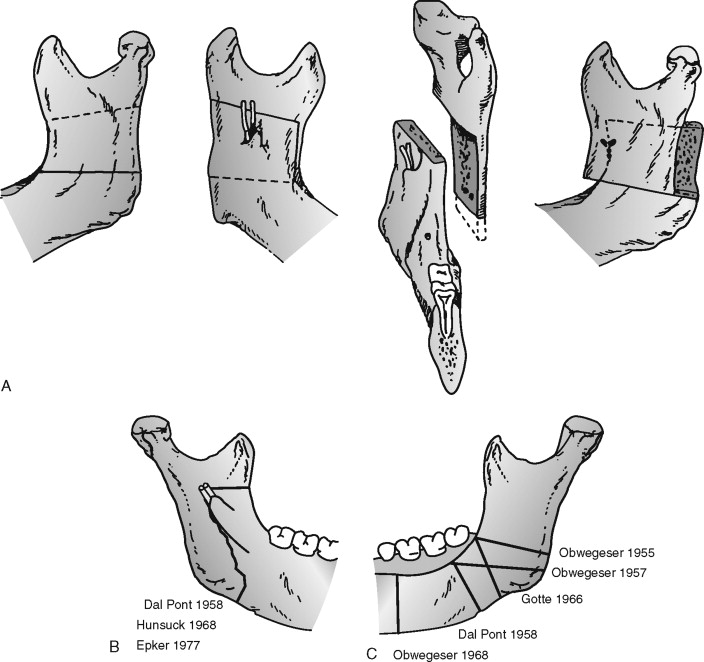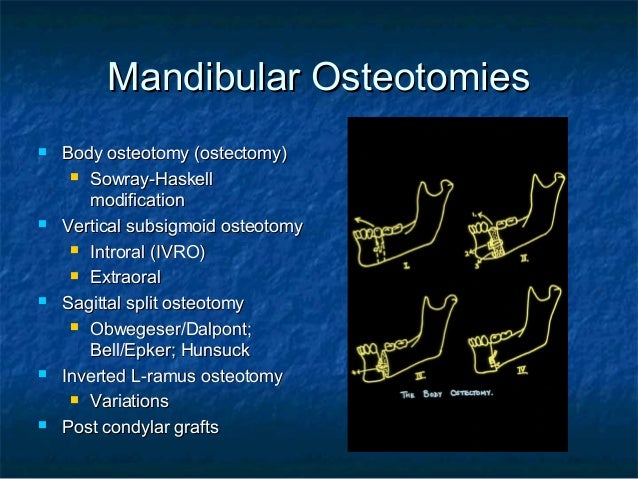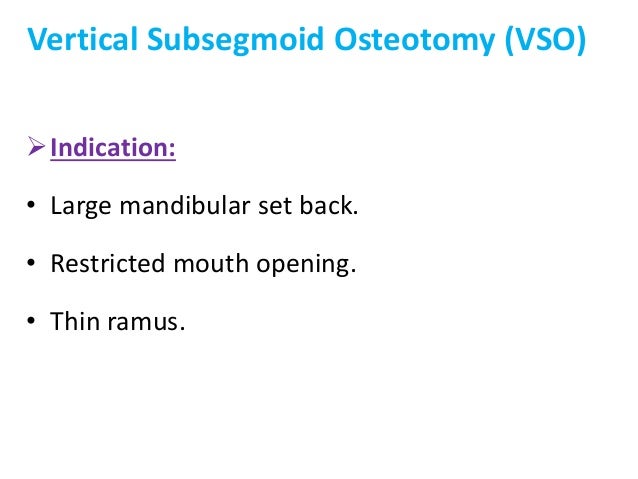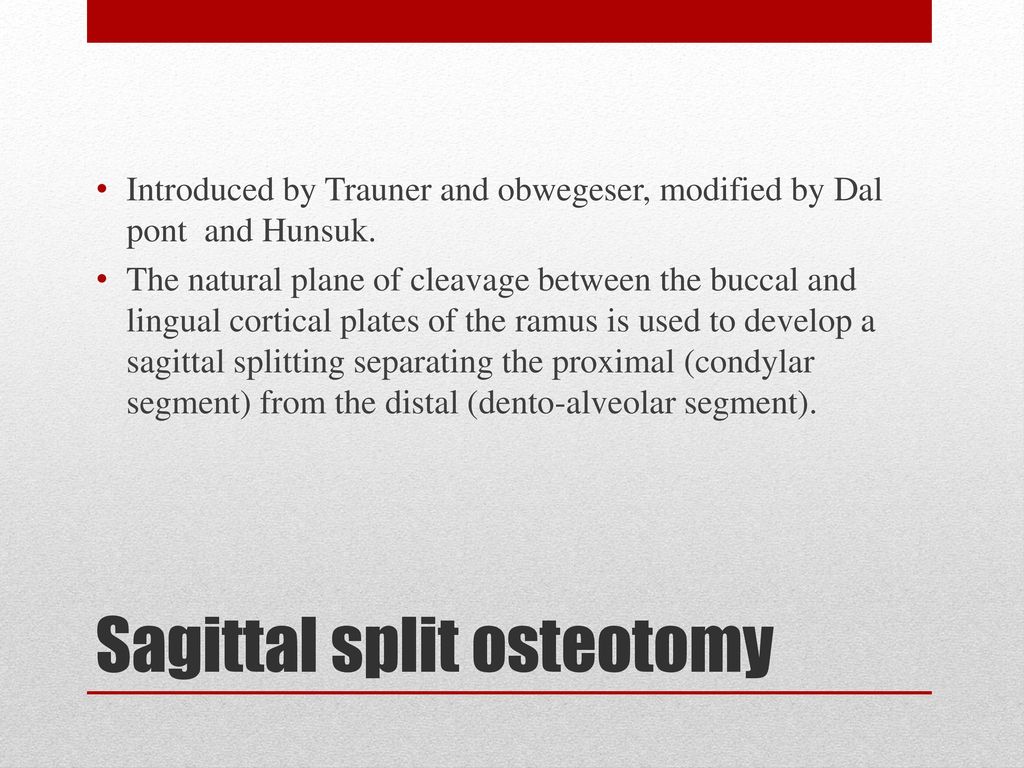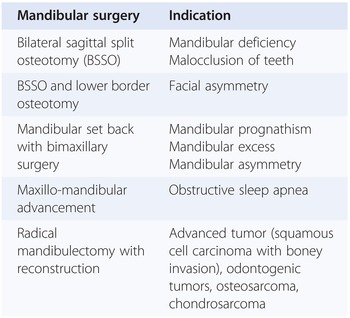Bilateral Sagittal Split Osteotomy Indications
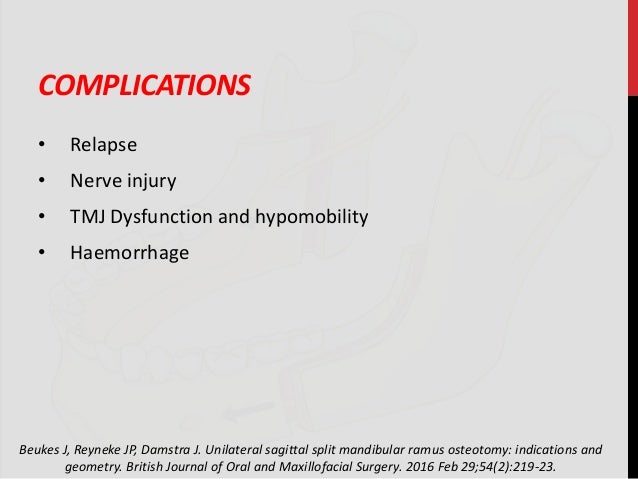
Obwegeser s bilateral sagittal split osteotomy was then performed.
Bilateral sagittal split osteotomy indications. Indications for a bilateral sagittal split include horizontal mandibular excess deficiency and or asymmetry. During sagittal split ramus osteotomies of the mandible the inferior alveolar nerve can be directly damaged by a burr on a rotary drill a blade on a reciprocating saw or a chisel used to complete the split. Controversy exists over its use to close open bites. To assess facial symmetry following usso in the treatment of class iii laterognathia.
A bsso is performed on the lower jaw the mandible in order to move it forward in the case of a deficient lower jaw or backward in the case of a large lower jaw. There is a lack of evidence to support the use of condylar positioning devices in orthognathic surgery. Indications for bilateral sagittal split osteotomy great three dimensional flexibility in repositioning the distal fragments which allows accurate intraoperative. More recently unilateral sagittal split osteotomy usso was used to treat such malocclusions.
This would ensure that there was no damage to the nerve during the entire surgical procedure. Since this method could affect esthetic as well as function evaluating these effects from various aspects is crucial. The nerve can also be compressed during osteotomy stabilization i e plate and screw fixation. Indications for the use of the procedure.
The bilateral sagittal split is an extremely versatile procedure that can be used to advance the mandible set it back or correct asymmetry. Broad bony overlap of osteotomized segments which results in excellent healing minimal alteration of the natural position of muscles of. The bilateral sagittal split osteotomy is considered the standard surgery to correct facial asymmetries. An osteotome and oscillating saw were used to perform this portion of the procedure.
Bilateral sagittal split osteotomy bsso of mandible is vastly used in treatment of mandibular deficiencies and discrepancies. Care was taken to ensure that the inferior alveolar nerve was in the distal segment. An important component of orthognathic surgery is the bilateral sagittal split osteotomy bsso which is the most commonly performed jaw surgery either with or without upper jaw surgery. A patient with mandibular hypoplasia and angle s class ii malocclusion presented for a bilateral sagittal split osteotomy and genioplasty with genial tubercle advancement.
The bilateral sagittal split osteotomy or bsso for short has evolved into an effective and preferred surgical procedure for mandibular advancement or setbacks.
